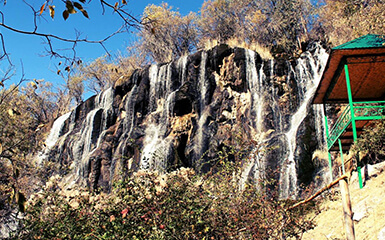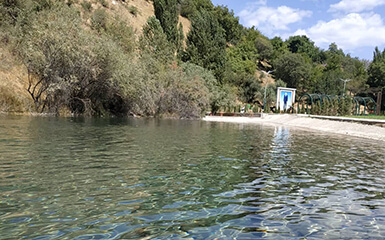Kok Gumbaz
Ajina Teppa
Ancient Panjakent
Anzob Tunnel
Beshkent Qala
Childukhtaron
Khazrati Shokh
Mug Teppa
Gharm Chashma
Hisor Historical
Haji Yaqub mosque
Hazrati-Bobo complex
Lake Iskanderkul
Kalai-Khumb
Karatag
Karon
Khishtin caravanserai
Khorog
Khulbuk
Lake Karakul
Abdullatif Sultan
Madrasai Kuhna
Abu Abdullah Rudaki
Khoja Mashhad
Khudoyor Valami
Makhmudi Azam
Mir Sayyid Ali Hamadani
Muhammed Bashoro
Sheikh Muslihiddin
Nurek Mountain Lake
Pamir
Sarazm
Sari-Khosor
Seven Lakes
Shirkent
Chiluchorchashma
Takht-i Sangin
Sari-Khosor Valley

The Sari-Khosor Natural Park was organized by the Decree of the Government of the Republic of Tajikistan dated October 25, 2003 on the territory of the Baldzhuvan region. The area of the park is 3805 hectares.
Sari-Khosor Natural Park is located in the south of Tajikistan and is distinguished by unique natural resources and mountain mesophilic deciduous forests that have survived in Tajikistan. The Sari-Khosor natural park is truly unique; mountain forests, consisting of walnuts (Juglans regia), a number of species of wild fruit trees and shrubs, are especially rich.
Due to the abundance of forage, during the ripening of fruits in the autumn period, such valuable game species of animals as wild boar (Sus scropha nigrepus) and bear (Ursus arctos isabellinus) are concentrated. There are also Siberian ibex (Capra sibirica), urial (Ovis vignei bocharensis), stone marten (Martes foina), otter (Lutra lutra), common lynx (Felis lynx), snow leopard (Uncia uncia). Chickpea (Alectoris kakelik), wood pigeon (Columbus polombus), turtledove (Steptopelia orientalis) and other birds are found in large numbers.
The variety of fauna and flora of the reserve located in a mountainous area allows it to be used for the organization and development of various types of tourism.
This unique natural park is a natural area protected by the state. The Ministry of Nature Protection of the Republic of Tajikistan manages Sari-Khosor Natural Park.
The water stream originating from the mountain peaks, flowing along the entire gorge, feeds the valley. Transparent springs, shady hazel groves, perennial plane trees and a variety of fauna, and above all this is the azure dome of a cloudless sky.
The population of several villages located in the valley is not numerous.
The life of these people is subject to the conditions in which they have lived for generations for more than one century. Therefore, they long ago learned to live in peace and harmony with nature, not to oppose, but to contribute to its transformation, to be not creators, but obedient children.
Another of the most beautiful places in the valley is located near the village of Mulokoni. A cascade of a waterfall falls from a height of 50 meters, scattering millions of splashes around itself, shimmering in the sun with all the colours of the rainbow.
With the aim of developing tourism in this region, a rehabilitation centre and other recreation and entertainment facilities are build.

